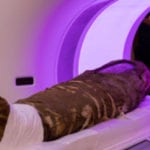 Politics
Politics  Politics
Politics  Weird Stuff
Weird Stuff Ten Bizarre Facts About The Doge Meme
 Our World
Our World 10 Ways Your Christmas Tree Is More Lit Than You Think
 Movies and TV
Movies and TV The 10 Coolest Stars to Set Sail on The Love Boat
 History
History 10 Things You Didn’t Know About the American National Anthem
 Technology
Technology Top 10 Everyday Tech Buzzwords That Hide a Darker Past
 Humans
Humans 10 Everyday Human Behaviors That Are Actually Survival Instincts
 Animals
Animals 10 Animals That Humiliated and Harmed Historical Leaders
 History
History 10 Most Influential Protests in Modern History
 Creepy
Creepy 10 More Representations of Death from Myth, Legend, and Folktale
 Politics
Politics 10 Political Scandals That Sent Crowds Into the Streets
 Weird Stuff
Weird Stuff Ten Bizarre Facts About The Doge Meme
 Our World
Our World 10 Ways Your Christmas Tree Is More Lit Than You Think
Who's Behind Listverse?

Jamie Frater
Head Editor
Jamie founded Listverse due to an insatiable desire to share fascinating, obscure, and bizarre facts. He has been a guest speaker on numerous national radio and television stations and is a five time published author.
More About Us Movies and TV
Movies and TV The 10 Coolest Stars to Set Sail on The Love Boat
 History
History 10 Things You Didn’t Know About the American National Anthem
 Technology
Technology Top 10 Everyday Tech Buzzwords That Hide a Darker Past
 Humans
Humans 10 Everyday Human Behaviors That Are Actually Survival Instincts
 Animals
Animals 10 Animals That Humiliated and Harmed Historical Leaders
 History
History 10 Most Influential Protests in Modern History
 Creepy
Creepy 10 More Representations of Death from Myth, Legend, and Folktale
10 Amazing Scientific Discoveries Of 2017
The best aspect of science is that it is always changing. New ideas and new discoveries change the way we perceive the world, and the people behind such observations are constantly at work. 2017 was no slouch in terms of new developments and advancements in technology, thanks to the thousands of men and women always wandering and testing the world to identify new things.
Whether it’s in the fields of medicine, communication, or human development, there is always something new to be found. In 2017, some significant advancements have helped to technologically propel us one step closer to the future. Here are ten discoveries or advancements made in 2017 that will amaze, confuse, and possibly terrify you.
10 First Successful Edit Of A Human Embryo In The US
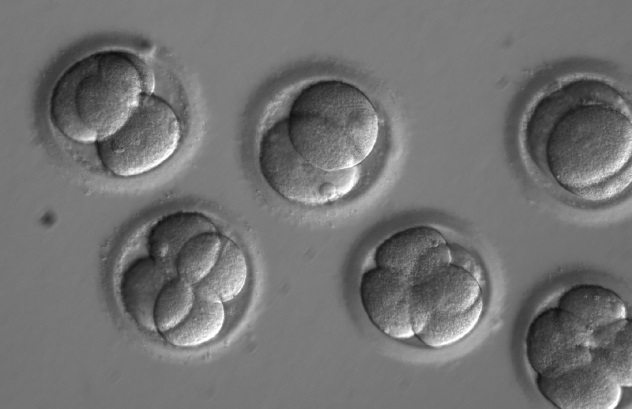
Science fiction writers have been warning us for years about the potential dangers of genetic engineering, but that hasn’t stopped scientists from pushing forward to make significant progress in 2017. The first attempt made in the United States to genetically modify human embryos was carried out by Shoukhrat Mitalipov of Oregon Health and Science University. The experiment successfully altered the DNA within the embryos via the gene-editing technique CRISPR. This wasn’t the first time such an achievement has been made—Chinese scientists had previously published three reports about the practice—but this is the first time the Americans have gotten off the sidelines and made it happen.[1]
The significance of American research in the process of editing a human embryo via CRISPR is paramount to the science moving forward. Innovations made by Mitalipov’s team allow for a new safe and efficient means of potentially correcting genetic disorders long before an embryo has a chance to develop. They successfully avoided the pitfalls of mosaicism, an error in the editing process made by the Chinese that left some cells unaffected. At present, the practice doesn’t allow for actual implantation into a womb, but once the legal hurdles are cleared, this research will likely yield the first genetically modified human, whom Star Trek already named Khan Noonien Singh.
9 Creation Of Metallic Hydrogen
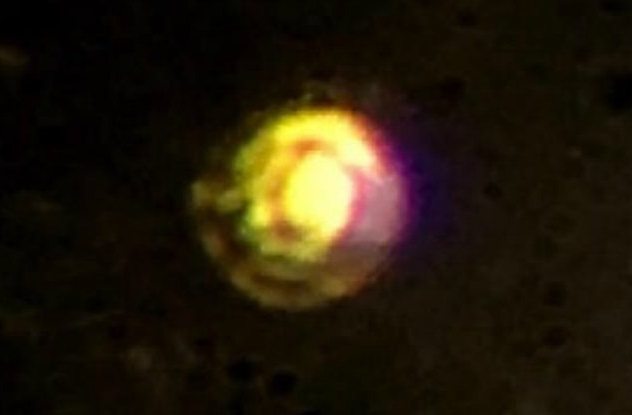
We all know Hydrogen is a gas, right? It’s the first element found on the Periodic Table and is also the most abundant element in the universe. Even people who aren’t involved in chemistry recall that much about hydrogen, so it might come as a shock to learn that scientists made a significant discovery about the element in 2017. Researchers at Harvard University finally proved a theory about hydrogen made more than a century previously: It can become a metal. They accomplished this by squeezing a small amount of hydrogen at a pressure greater than that found at the center of the Earth: 71.7 million pounds per square inch. This caused the sample to break down and transform into atomic hydrogen, which is a metal.[2]
Believe it or not, the impacts of creating metallic hydrogen are huge. Finding a way to convert hydrogen into a metal has been called “the holy grail of high-pressure physics,” and the uses for metallic hydrogen suggest it can be used as a room-temperature superconductor. Additionally, the innovation can benefit the transportation industry by making electric cars more efficient as well as many other practical applications for other industries.
8 First Gene Editing To Modify DNA In A Living Patient
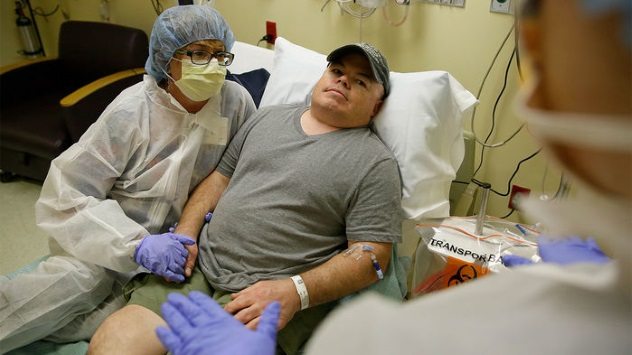
Editing the genes in an embryo is one thing, but editing them inside a fully grown adult is another. The difference has to do with the number of cells involved and a wide range of other issues, but the scale is increased astronomically. Scientists initiated an experiment in November 2017 to attempt a repair of a patient with a rare metabolic disorder. The 44-year-old patient has Hunter syndrome, a disorder that can cause developmental delays, brain damage, and a reduced life span. The experiment developed a method via a process called zinc finger nucleases (ZFN) to infuse the patient’s blood with tools designed to edit DNA.[3]
In this particular experiment, the goal wasn’t to outright alter the DNA of existing cells but to remove portions of the DNA helices of liver cells. Once that bit has been cut out, a replacement copy without the code for the disorder is entered back into the helix. The idea is that those cells will then multiply and hopefully replace enough of the original cells carrying the “bad genes” for the disorder to degrade, resulting in a new form of treatment. This process is called “safe harbor,” and it avoids potential complications by targeting specific parts of the DNA helix rather than randomly altering it, which could potentially result in turning on harmful genes.
7 Oldest Human Skeleton In The Americas Discovered To Be 13,000 Years Old
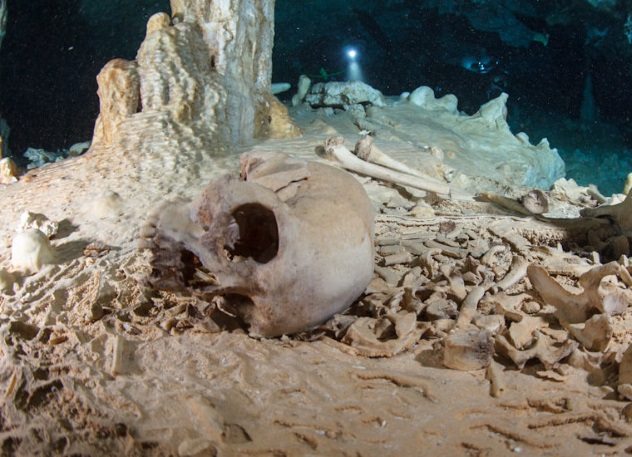
A discovery in a flooded cave in Mexico moves the timetable of when humans migrated from Asia into the Americas back a few thousand years . . . maybe more. The discovery of a young male human skeleton, dubbed the Young Man of Chan Hol (the name of the cave), places his death at 13,000 years ago. We have known that an ice-free land bridge opened up between North America and Asia 12,500 years ago. This young man came to Mexico much earlier than that.[4]
Not only is the skeleton 500 years older than the known existence of the land bridge, but it was found more than 6,400 kilometers (4,000 mi) away in the south. This suggests that the Young Man of Chan Hol migrated much earlier than previously believed. This discovery is the oldest human skeleton found in the continent thus far, but other discoveries in Chile have yielded human artifacts dating back to at least 18,500 years ago. That discovery and others have pushed the arrival date of humans in the Americas as far back as 22,000 years ago.
6 Human Cells Grown Inside Pigs
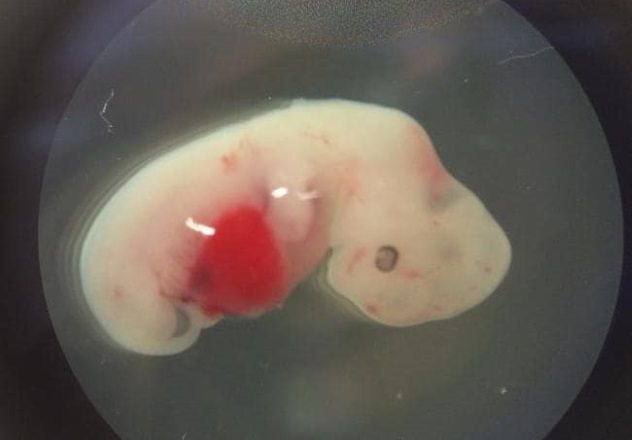
When it comes to creepy but useful, you don’t need to look much further than the innovations made by the work of the Salk Institute’s Juan Carlos Izpisua Belmonte with humans and pigs. Belmonte has been working on developing human organs inside pigs, and he succeeded in the first step in that process in 2017: growing human cells within a developing pig embryo. The result of creating an organism with alien cells is called a chimera and has been done with mice and rats. Putting human bits into a pig is a new development and one that may change medical science as we know it.[5]
The goal of the project isn’t to create human-pig hybrids intent on world domination but rather to grow human organs inside the developing animals. This could drastically increase the availability of viable organs used for implantation in humans and also help in studying the ways that genetic diseases develop in organs, which helps scientists develop new drugs. The cells that were injected into the embryo were precursors of muscle, pancreas, spinal cord, heart, and liver tissue. While this is only a “first step” in the process, the research Belmonte is doing could be a game-changer in the advancement of medicine.
5 Successful Data Transmission Using Quantum Entanglement
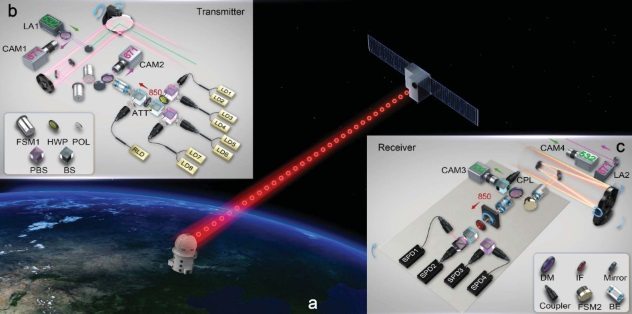
Data transmission has always been a problem. Whether the rate of transfer is too slow or picks up errors and degradation along the way, the movement of data has been something of a limiting factor in the growth of the Information Age. It’s only in the last decade or so that we can stream a movie on our computers or smartphones, so where might we go from here? Chinese scientists may have answered this question by successfully transmitting data via quantum teleportation. Yes, teleportation.
This doesn’t mean they placed a notepad onto a transporter device like in Star Trek and beamed it somewhere. What they achieved involved the transfer of quantum information by manipulating the quantum state in one particle, with instantaneous results more than 1,400 kilometers (870 mi) away. The researchers in Ngari, Tibet, succeeded in transmitting the data to the Micius satellite, currently in orbit. This wasn’t the first time they succeeded in manipulating matter in two different places simultaneously, but this experiment blows their previous success of a 100-kilometer (62 mi) transmission out of the water.[6] The potential practical applications for this achievement may allow for advances in quantum computing, which should put the development of Skynet right on schedule.
4 First Successful Relaunch/Reuse Of A Rocket
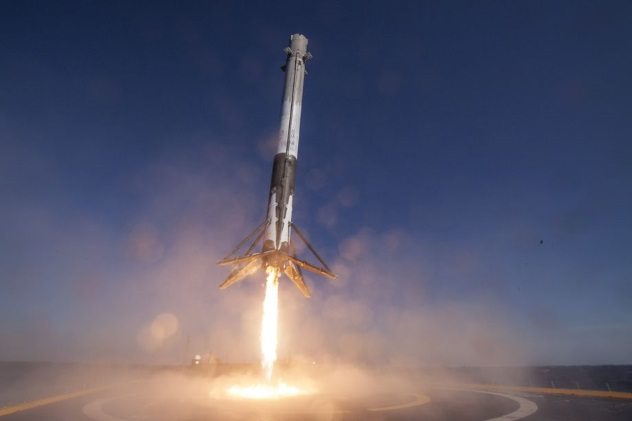
It took them a few years and several attempts, but Elon Musk’s SpaceX successfully achieved a feat that was relegated to science fiction until only recently. They launched and then vertically landed a rocket. Actually, they achieved that a couple of years back, but the big achievement made in March 2017 came when SpaceX launched a rocket they had previously landed.[7] This was an important milestone for both the company and the development of spacefaring technology, given the astronomical costs associated with simply getting something into orbit around the planet.
Prior to the March launch, no non-booster rocket launched into orbit had ever been recovered and launched back into space. Previously, all rockets that carried a payload or even people into space were dumped into the ocean or burned up on reentry, never to be used again. This meant that a subsequent launch required the construction of an entirely new rocket. Since spacebound rockets cost in the hundreds of millions of dollars, finding a path toward better rocket recycling was a must for Musk’s company. Since their successful launch in early 2017, the company succeeded in recovering all of their rockets and continued the practice with the historic launch of the Falcon Heavy in early February 2018.
3 Humanity Is Much Older Than We Thought
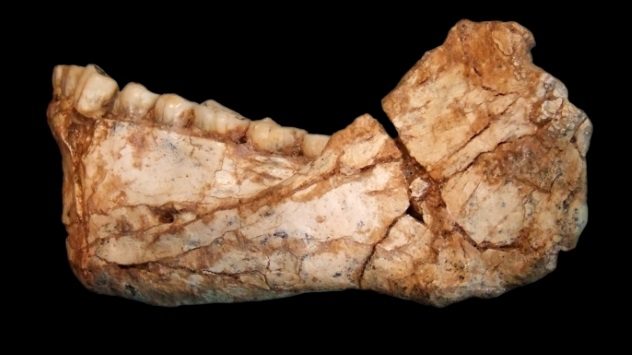
It seems every few years, a discovery is made requiring us to update our history books when it comes to determining just how old humans actually are. As we’ve increased our understanding of human evolution, we’ve have pushed the date further back in time. For many years, it was believed that Homo sapiens began on Earth around 100,000 years ago. Eventually, this number doubled, and thanks to a new discovery made in Morocco, it looks like we have been walking about this planet for at least 300,000 to 350,000 years.
That’s a significant change to our previous understanding, especially considering that human remains at the same site had only ever yielded bones dating back 40,000 years. Prior to this discovery, the oldest-known human remains were found in Ethiopia, with a date placing them back 195,000 years. This new finding not only indicates that humans have existed for nearly twice as long as previously thought, but we crossed Africa long before ever thought possible.[8]
2 First Interstellar Visitor Was Tracked In Our Solar System
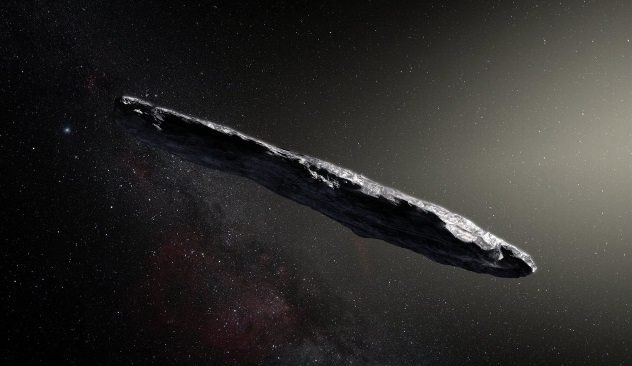
Glance up at the night sky, and any stars you see are far beyond the boundaries of our solar system. Light from these objects has been reaching our planet since it was formed more than 4.5 billion years ago, but physical objects from far away had never been observed in our space until only recently. In October 2017, astronomers working out of the University of Hawaii identified an object that did not originate in our solar system, making it the first known alien object to ever visit us. The object was little more than a large piece of rock like many found in our local neighborhood, but its trajectory clearly placed its origin far from our neck of the woods.
The object, named ‘Oumuamua, which means “scout” or “messenger” in the Hawaiian language, is spinning rapidly, has a radius of approximately 100 meters (330 ft), and is about 800 meters (2,600 ft) long. Based on ‘Oumuamua’s trajectory upon entering our solar system, it came from somewhere in the vicinity of the constellation Lyra. It arrived in a perpendicular path before our Sun’s gravity altered its route and shot it toward the constellation Pegasus. It passed Earth at a distance of approximately 15 million miles at a speed of nearly 45 kilometers per second.[9]
1 Successful Creation Of An Artificial Womb
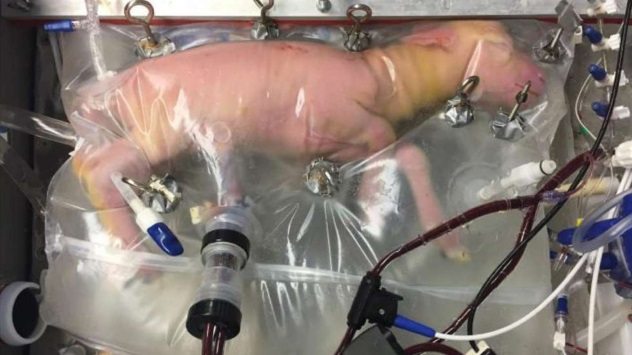
In just about any film featuring cloning, scientists have to create a sort of artificial womb to mature an embryo. Without such a device, a surrogate womb would be needed in order to create a clone, which is how cloning has previously worked outside of science fiction. The first cloned sheep, Dolly, was “grown” in a surrogate sheep’s womb, but this method has never been efficient and often results in failed pregnancies. Ideally, an artificial womb would offer a means of gestating a clone in a lab, where it could be monitored and maintained, but the application of this would also help “carry” prematurely born human babies to term in an environment much safer than current technology allows.
A new study published in early 2017 found that an artificial womb created by researchers from the Children’s Hospital of Philadelphia succeeded in fostering normal growth in fetuses “born extremely prematurely,” with successful development in all areas. This new artificial womb was used on lamb fetuses, and the results were extraordinary. As research continues, Alan Flake, the lead researcher behind the study, believes that they will be able to test the womb on premature human babies within three to five years. If proven successful, premature babies could theoretically continue to develop fully outside their mother’s womb and inside this artificial one until they are ready to be born.[10]
Read about more advancements and learning from 2017 on 10 Absorbing Advances About Alcohol Achieved In 2017 and 10 Fascinating New Things We Learned About Dinosaurs In 2017.


